Texture – Forgotten Feature of Landscaping
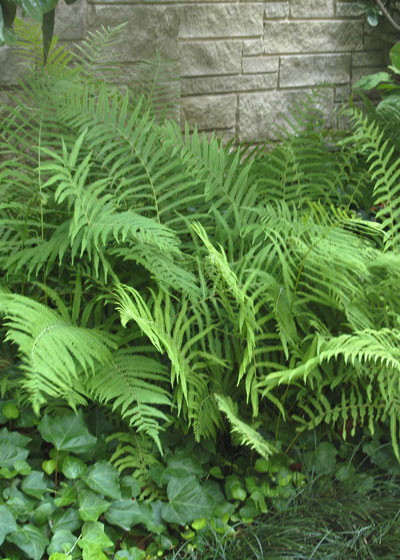
Photo: Rich blend of textures provide a garden highlight in spite of the shade.
You could do an entire landscape featuring nothing but plants of interesting textures. There aren’t a lot of gardeners who realize that, but those who do have unlocked one of the real secrets of fine garden design.
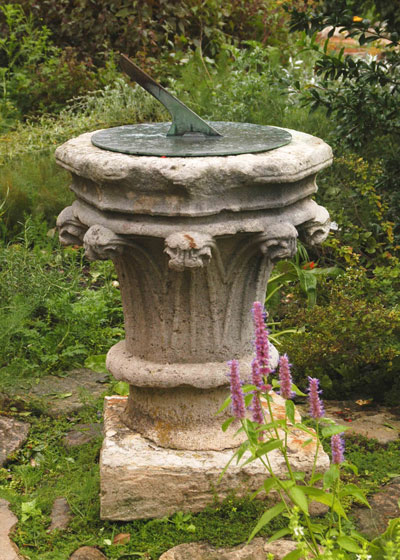
Photo: Sundial brings the most dramatic possible texture to its surroundings.
Texture might be described as the “visual weight” of a plant or an object. That’s where we pick up terms such as “heavy-” or “light-textured.” Plants with large leaves are labeled as “heavy-” or “bold-textured.” That list is lengthy, but just as a few examples, bur oaks, elephant ears, fatsias, oakleaf hydrangeas and southern magnolias all are visually heavy in a landscape. Ferns, dwarf yaupon hollies, nandinas, junipers, liriope and ornamental grasses all bring light, or fine textures. Some might describe them as “airy.”
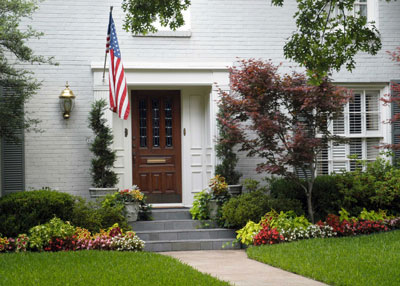
Photo: The plants, flag and finishing touches all bring their own inherent textures to this lovely entry garden.
Every last thing that you add to your landscape has its own inherent texture. Boulders, concrete pedestals and flagstone walks all are obviously heavy-textured, while wrought iron and fine gravel bring a much lighter feel.
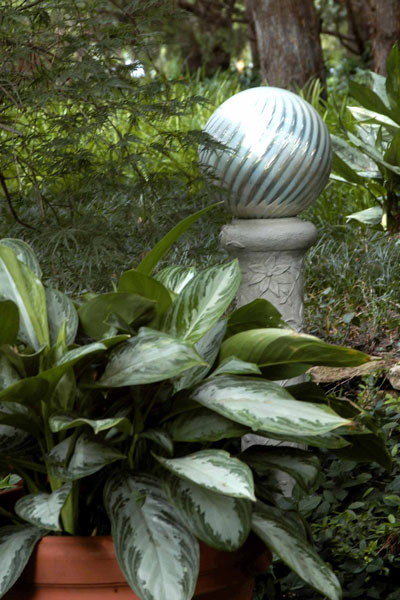
Photo: Tropical aglaonema brings excitement to the summertime garden. It sits alongside a Japanese maple and in a bed of regular mondograss, both very fine-textured.
As with any kind of decorating, you want to use a nice variety of textures. Use bold-textured plants and products to draw attention to an otherwise uninteresting area. Large fountains and urns become the focal points of their surroundings. Stone walls draw a definitive boundary to their gardens. They stop your eye’s flow across the landscape.
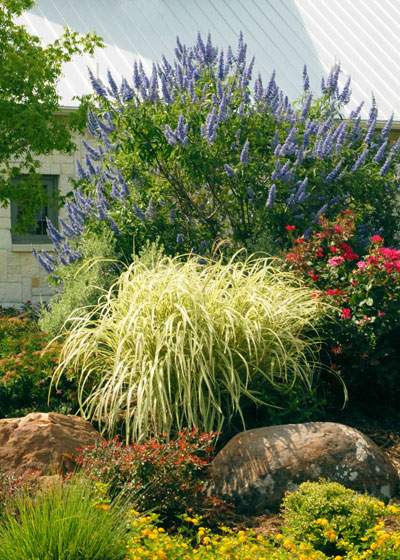
Photo: Fine texture of variegated grass stands out against vitex and boulders.
Use fine-textured elements to make a small garden appear larger. Cover a bank with a trailing groundcover such as Asian jasmine or Tam junipers. Use arching Italian jasmine or Sea Green juniper as a soft backdrop to other plantings. Japanese maples add color to a shaded garden without shrinking its apparent size.
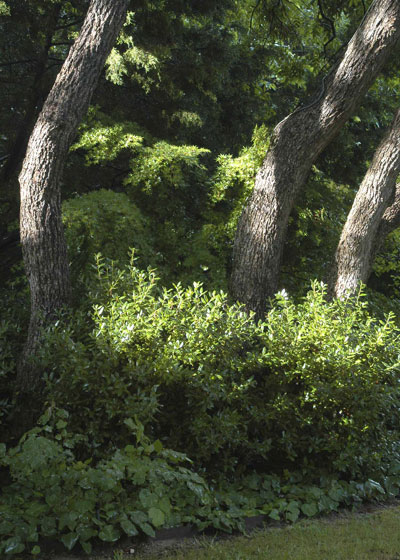
Photo: Bark plays important part in creating the textural art, even during the growing season.
Trunk and bark play a part in determining a plant’s textural contribution to a landscape. Slick-trunked crape myrtles, yaupon hollies and Texas persimmons give a lighter feel. Heavily fissured barks of eastern persimmons, bur oaks and cottonwoods pour in more drama. Bark may not be something you’ve spent much time considering, but it’s deciduous plants’ main visual contribution for several months every winter.
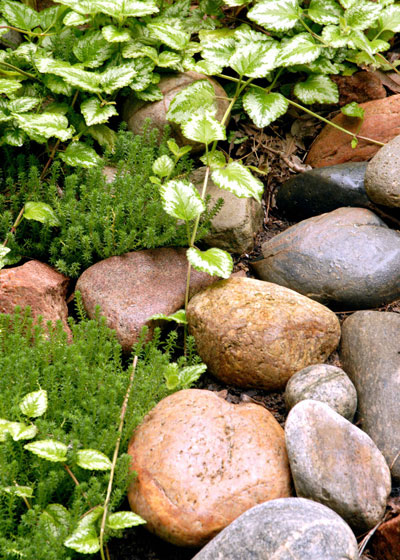
Photo: River rock and groundcovers (sedum and lamium) contrast handsomely.
One of the really effective ways to show that you fully understand this entire topic is to use contrasting textures side-by-side. Mondograss is handsome next to Carissa hollies, English ivy or rounded river rock. Or, if you’re using mondograss as a replacement for turf due to excessive shading, contrast its texture by planting oakleaf hydrangeas or Mary Nell hollies within the same bed.
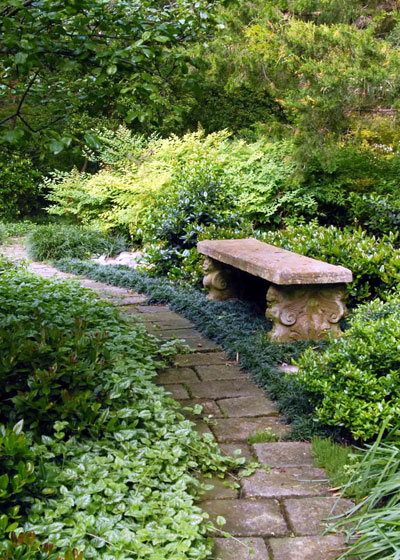
Photo: The Sperry home gardens put textures to work creating interest without worrying about color.
As you see gardens you really admire over the next several months, make note of how often they’ve worked a handsome combination of textures into their artistic designs. The more you think about it, the more it will be a part of your planning, too.
